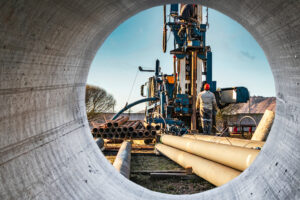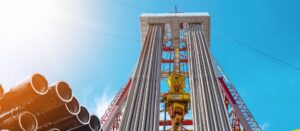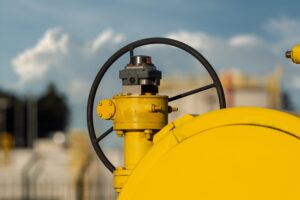In the oil industry pipe is an asset. Without pipe in proper working order, projects can slow, stop, or be canceled altogether. This can cost a company time, money, equipment, and skilled labor. Unfortunately, pipe failure cannot always be avoided. Yet, knowing the most common causes of pipe failure can help to prevent and avoid future problems.
Common Causes of Pipe Damage
Damage to pipe can happen in any number of ways. Some of it is obvious and other signs of fatigue or damage may not be visible to the naked eye. As such, knowing the most common causes of damage can aide in employing new techniques, processes, or products that will prevent as much damage as possible.
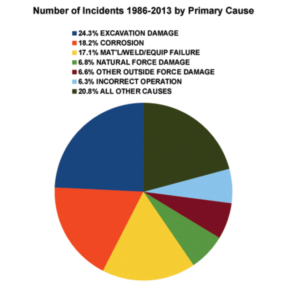
Twist-off. Pipe damage or failure is often linked to pipe twist off. This damage occurs from shearing stress linked to torque exceeding the pipe material’s ultimate shear stress. This type of damage does not occur in vertical well drilling as much as it does in directional and extended reach drilling, where torques that exceed 80,000 pounds per foot are common.
Parting. Pipe parting failures are not uncommon and occur when induced tensile stress exceeds the pipe material ultimate shear stress. Damage or failure due to parting is often associated with pipe sticking an overpull is involved.
Collapse and Burst. While collapse and burst is rare, it does happen. Collapse and burst is most often associated with high mud weight and loss of circulation.
Fatigue. Pipe fatigue occurs in many ways and generally refers to microcracks in the pipe that often cannot be seen with the naked eye. This is a result of stress on any area of the pipe. Fatigue is often a combination of cyclic stresses and corrosion. Pipe corrosion occurs in the presence of O2, CO2, chlorides, and/or H2S. H2S.
Why Pipe Damage and Failure Needs to be Avoided
All interested parties want to avoid pipe damage and failure because its implications are far-reaching, as it often results in devastating incidents. When pipe failure occurs, it can cost the company millions of dollars in downtime. Regardless of why a pipe failed, the expense can be devastating. Not only can a pipe be a complete loss, resulting in downtime, but there may also be loss of expensive equipment. In some cases, the whole project must be abandoned.
In addition to downtime, loss of equipment, and the potential loss of millions of dollars, pipe damage can also lead to injury to those who are working on the drill site. While pipe is an asset itself, companies view their workers as assets too, and when they are injured on site it affects the company workload, insurance rates, and morale. Below is a graph that shows injuries to workers over time.
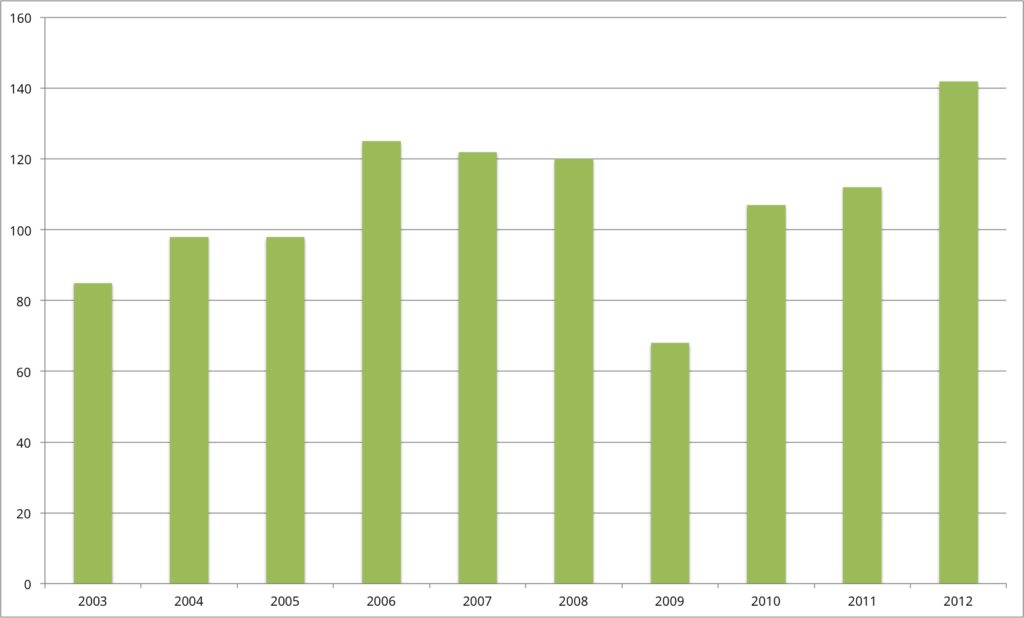
Not only do incidents involving fatigued pipe impact businesses and employers, but they also affect the land and the people who live around these incidents. Pipe failure often leads to oil spills that contaminate the soil and can affect the residents and animal life of the area for generations.
Avoiding Pipe Damage and Failure
Pipe damage that can result in failure is not always predictable, as some problems occur that are outside of the operators’ controls. Yet, there are measures that can be taken to avoid future damage and failures.
Training. Oil and gas companies need to ensure that all workers have up to date safety training and certifications. When everyone on the job site has proper training and abides by strict safety guidelines, preventable accidents are less likely.
Pipe Protection Products. There are many pipe protection products available today. These products are manufactured specifically to ensure that pipe is stored, transported, and handled as safely as possible. While proper pipe protection is an investment, it is one that will pay for itself because it protects company assets including pipe, people, and equipment.
There are a variety of protection products that will make storing, lifting, transporting, and handling of pipe safer:
Rhino™ Tubular Handling Systems are valuable for companies that are looking for the highest level of performance for pipe storage and protection. The Rhino system has proven its ability to withstand even the toughest handling conditions for decades and is a safe and effective method of bundling, lifting and transporting various sizes of heavy-duty tubular stock anywhere in the world.
Thread protectors are used to protect pipe from rough handling, harsh weather, transportation, and lengthy storage. Thread protectors simply screw onto the ends of the pipe to ensure that the threads are protected during pipe movement. Thread protectors can also help to avoid contamination from any foreign materials that may potentially enter the pipe. There are a wide variety of thread protectors to choose from, ensuring adequate protection for every type of pipe.
Bumper rings are important for storage or transportation. Bumper rings prevent both impact and environmental damages caused by multiple joints of pipe encountering one another during storage or transport. Using bumper rings will eliminate contact and prevent corrosion.
Pipe chocks are ideal for companies who are looking to store and transport their pipe in a secure way that further reduces the chance for damage by eliminating movement. Pipe chocks are devices that have been designed to be secured by nail to provide a stable resting position for the pipe. The pipe chocks are molded from a durable resin material with a nail slot design that makes using them as convenient to install and remove as they are protective.
Stabbing guides are an overlooked element in pipe protection but they can help to protect pipe during use. These guides are employed when making up a string of pipe and can protect face damage and connection failure. These guides are made from a steel core and urethane outer shells and have handles for guidance and are offered with varying types of closures to ensure they can be used with all pipe.
Lifting bails will also protect your pipe by safely lifting pipe, drill bits, and other equipment more easily and efficiently, while contributing to a safe work site, as well.
Each of these pipe protection elements will perform well on their own to protect individual threads, pipes, and people. When these elements are combined, protection is further improved, and job sites become more efficient, effective, and safer than ever before.
MSI Wants to Be Your Pipe Protection Supplier
Pipe protection technology is a necessity for those working in the oil and gas industries. Preserving and extending the life of valuable assets is key to providing sound products and services efficiently and safely. Safety, efficiency, and maintained value are important in these industries, and pipe protection is essential to reliable operation. MSI is proud to provide the latest innovative technologies in pipe protection that have been tested for maximum results. Download a copy of our new catalog here!

